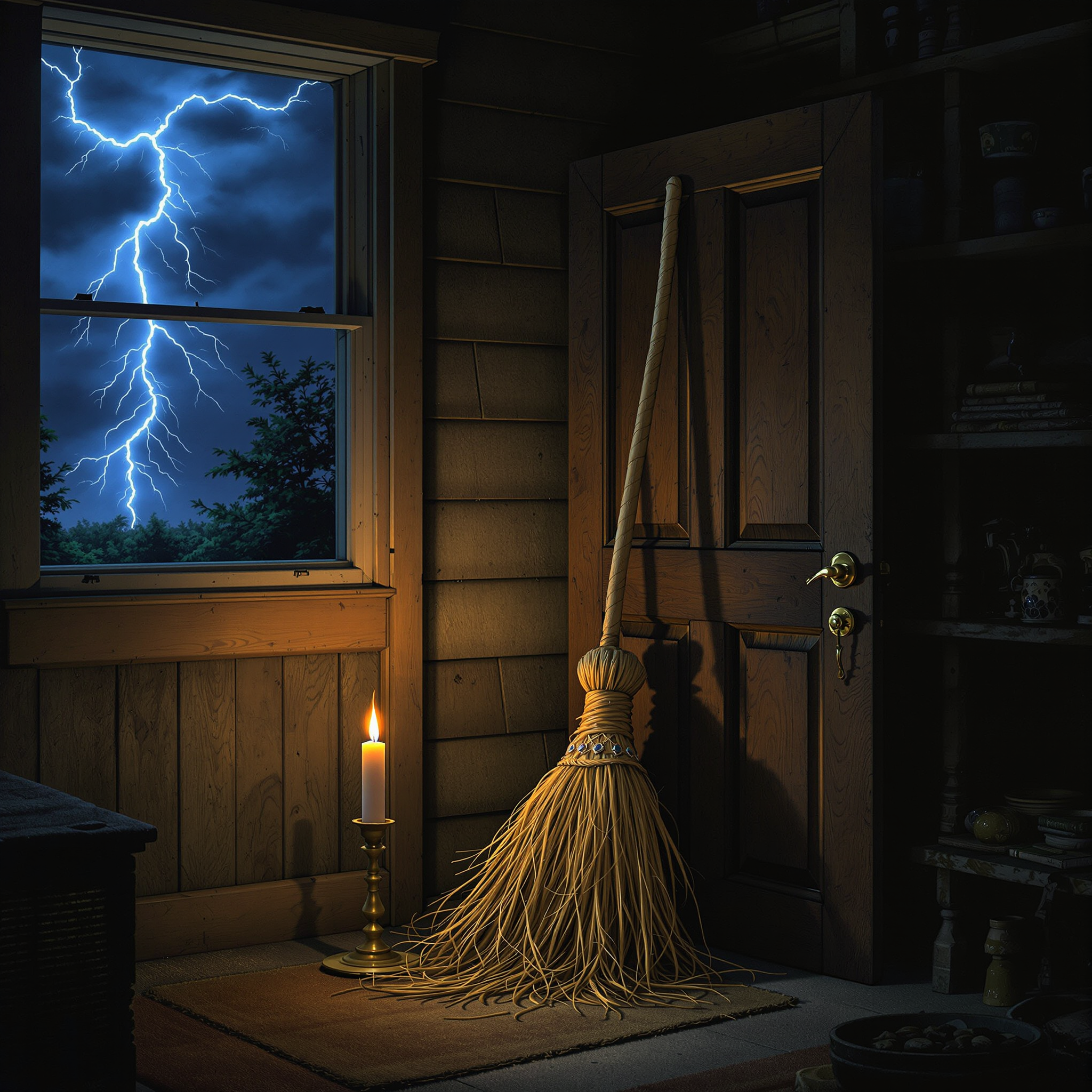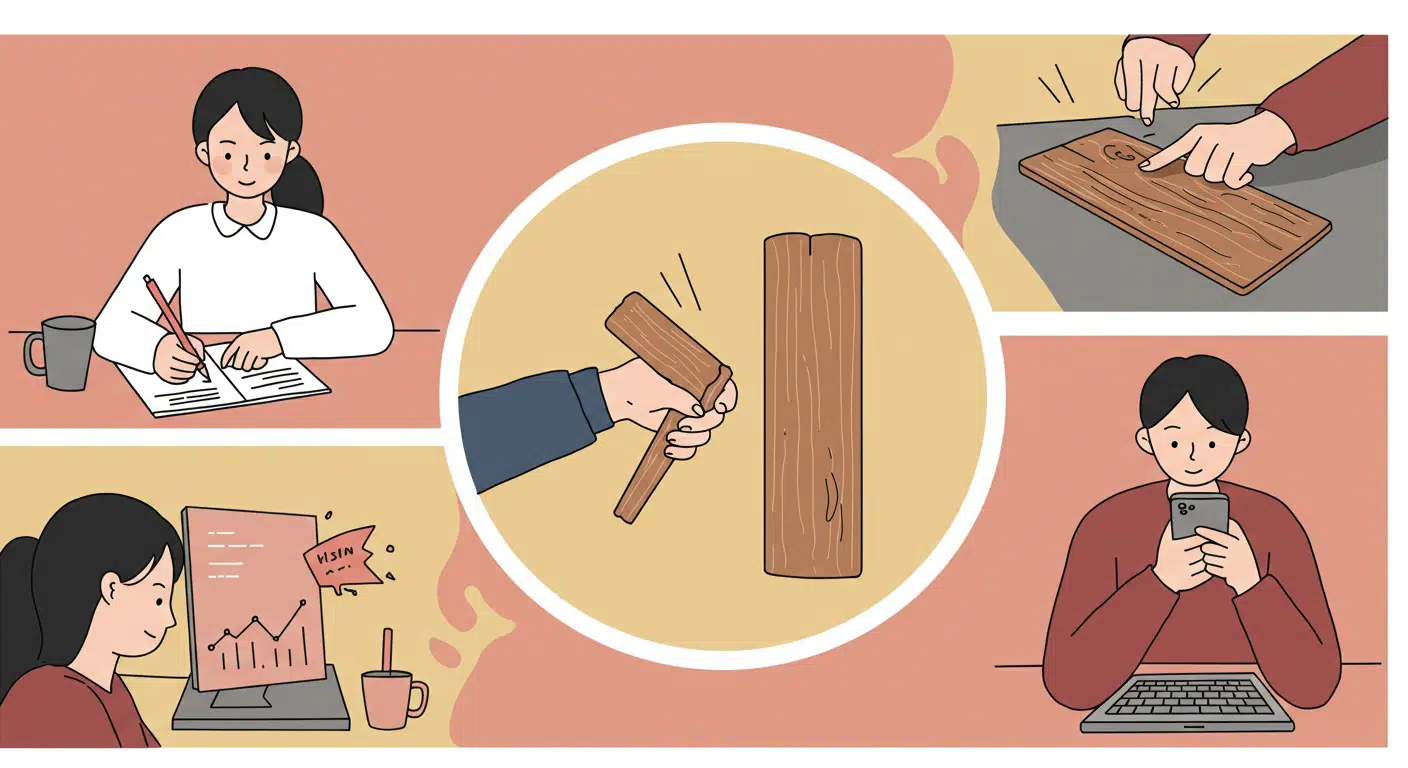The superstition involves placing a broom — typically a household sweeping broom made of straw or twigs — upright or laid flat behind the main entrance door of a home. The act is believed to confuse or repel witches or evil spirits seeking entry. In some versions, the bristles absorb or deflect negative energy; in others, the straw or broom shape has symbolic protective meaning. Often, the broom is left undisturbed behind the door overnight or during perceived times of spiritual risk, such as Halloween or after confrontations. While no rituals accompany the act, it relies on passive placement and symbolic interference with supernatural entities.

A baby’s future career or fate is predicted by the first object they select during a ceremonial setup.
In several Asian and Eastern European cultures, a traditional ceremony is held for babies usually around their first birthday. Known


